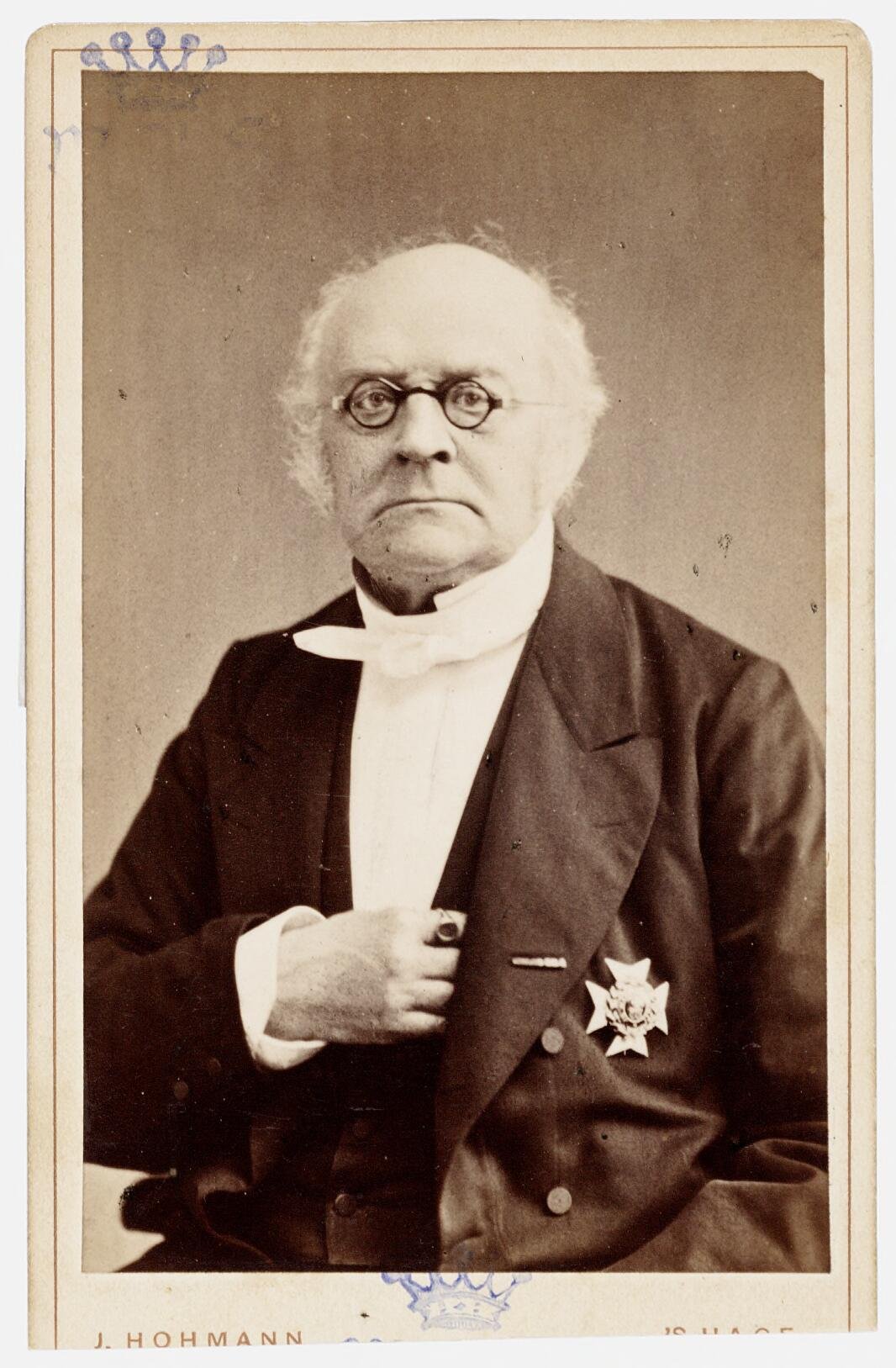Home > History > Rabbi Jacob De Leeuw
Rabbi Jacob De Leeuw
(Zutphen 27.10.1811- Amsterdam 15.9.1883)
Publicized on 18.7.2024 –
Last Edited on 11.09.2024
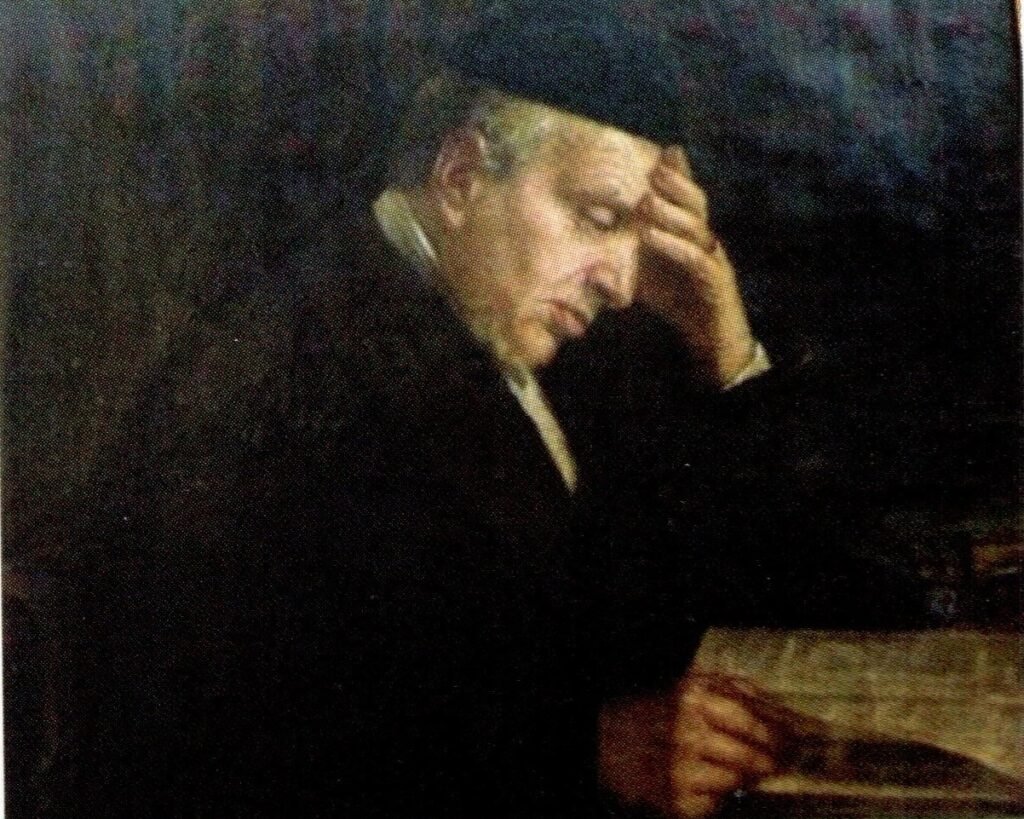
Solving the riddle: the days and life
of the mysterious yet illustrious
Rabbi Jacob Heymann De Leeuw Z”L,
author of book Shoshanas Yaakov
and many more.
Zutphen
Rabbi Jacob Heijman De Leeuw הרב יעקב בן הח״ר חיים דע לעהוו (דה לוו)(mentioned in birth certificate as Jacob Jacobs) was born unto his father HaChover (honorary title) Heijman (who died 26/11/1856) and his mother Geertruijd(e/a) (nee Marcus).
Rabbi De Leeuw was born on 27/10/1811 in Zutphen, Gelderland. In the introduction to his book Shoshanas Yaakov (Leyden, 1848) he writes that as a boy in Zutphen he was injured and it’s known he suffered from some health issues throughout his life. The family name was originally spelled De Leef. Rabbi Jacob de Leeuw’s father Heijman marriage in Doetinchem, Gelderland was registered in 10.11.1805.

City of Zutphen in 1654
In 1813 the family lived in Zutphen, Gelderland with 4 children: the oldest child: Solomon (5), then Roosje (3) (mother-in-law of Rabbi J.H.M. Lewenstein of Surinam), then Rebecca (2) and Jacob (1). Sister Fransje de Leeuw gets born on 27 May 1816 in Oudewater, Utrecht and after that Sodik (1819), Abraham (1820), Izak (1822), Solomon (1824) and Rozetta (1826) who we’re all born in Zutphen (source: Gelderland Civil Register).
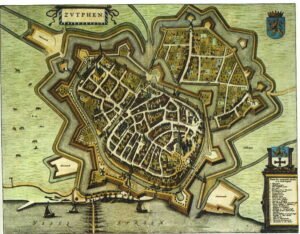
Den Bosch – ‘s-Hertogenbosch
The family in 1827 moved to Den Bosch where he found many Torah scholars, however it also states that he moved to Den Bosch with both his father and his Rabbi, as he mentions in the introduction to his book Shoshanas Yaakov.
It’s unclear if father and Rabbi refer to his father only or if a Torah scholar moved to Den Bosch and the family moved with him. An eulogy article
Israëlietische Nieuwsbode, Week 40, Oct. 1883 quotes an article from Der Israelit (printed in Mainz, Germany) eulogising Rabbi De Leeuw and states the following “Already at a young age the deceased showed an exceptional love for Jewish knowledge, in which he, especially in the area of Talmud, as tough by the youthful Rabbi from Pinsk (Belarus), R. Bär Lipschütz, was being trained. Because of unfortunate circumstances in S’ Hertogenbosch, to
which his parents had moved after leaving Zutphen, he had to discontinue
his studies and join an enterprise. Whilst busy there in the day, he’d spend
most of his nights in the company of his likeminded friend, the late
Sanwel Hartogensis studying Torah.”
Sanwel probably comes from Samwel, which is Samuel in Dutch Jiddish.
The article is referring to Rabbi Samuel Hartogensis (Rotterdam 1804 – 1872 Den Bosch) who seemed to have lived in Den Bosch from (at least) 1829 till 1872 and who is described as “a banker, Talmud scholar and philanthropist” (Source: Henry S. Hartogensis (1829 – 1918) – Sometimes You Have To Say No by Fred Shoken in B’nai Israel) and mentioned as the father of Henry S. Hartogensis (Den Bosch 1829 – Baltimore 1918).
Besides being a descendant of Rabbi Aryeh Loeb Breslau, who wrote the book Pnei Aryeh (Rabbi Breslau’s sons changed their family name to Löwenstam after his first name Loeb). It says that Rabbi Hertogensis
“was well known as philanthropist, scholar and banker, still remembered throughout Holland as Rabbi Samuel, despite the fact that he always refused to be considered in the rabbinate of to allow the Morenu to be conferred on him” (Source: The Jews of Baltimore by Isidor Blum, Baltimore-Washington: Historical Review Publication Company, 1910).
The Nieuw israëlitisch Weekblad of 20 Januari 1933 describes that Rebbe Zanwel or Sabel, who was given the title of Moreh posthumously, as a “very religious, noble and well-learned which is evident from the fact that he was given the tittle of Moreh (higher Rabbinic title) posthumously”. In the 1825 yearbook of the province Brabant he’s mentioned as the the secretary of Rabbinic Ressort Brabant and the 1st Gabbai of the burial society.
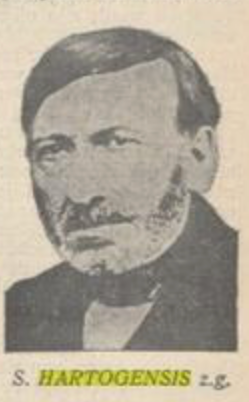
Hertogensis
“When his boss asked him to marry his daughter under very profitable conditions, he left the business and he distanced himself from the girl he had admired, because he was given the condition, that his daily studies with his friend H. (Hartogensis) would have to be stopped. He found a job by the
taxes administration en became well acquainted with Officer of Justice
(state attorney) Pape (who later became a member of the Supreme Council),
who because of R’ Jacob came to appreciate the Talmud so much, that
when he was later appointed in the Ministry of Justice and had to execute a reorganisation, he nominated De Leeuw to be the advisor for Talmudic Law.
In the meantime De Leeuw had the opportunity to save some money,
he quit his position en dedicated himself exclusively to the study of Torah.
The seriousness of his studies can be proven by the following account:
once on a Friday he was engrossed in his studies in the library of the late Hertogensis so badly that he’d forgotten that Shabbos had started, as he hadn’t eaten or slept in 24 hours.”
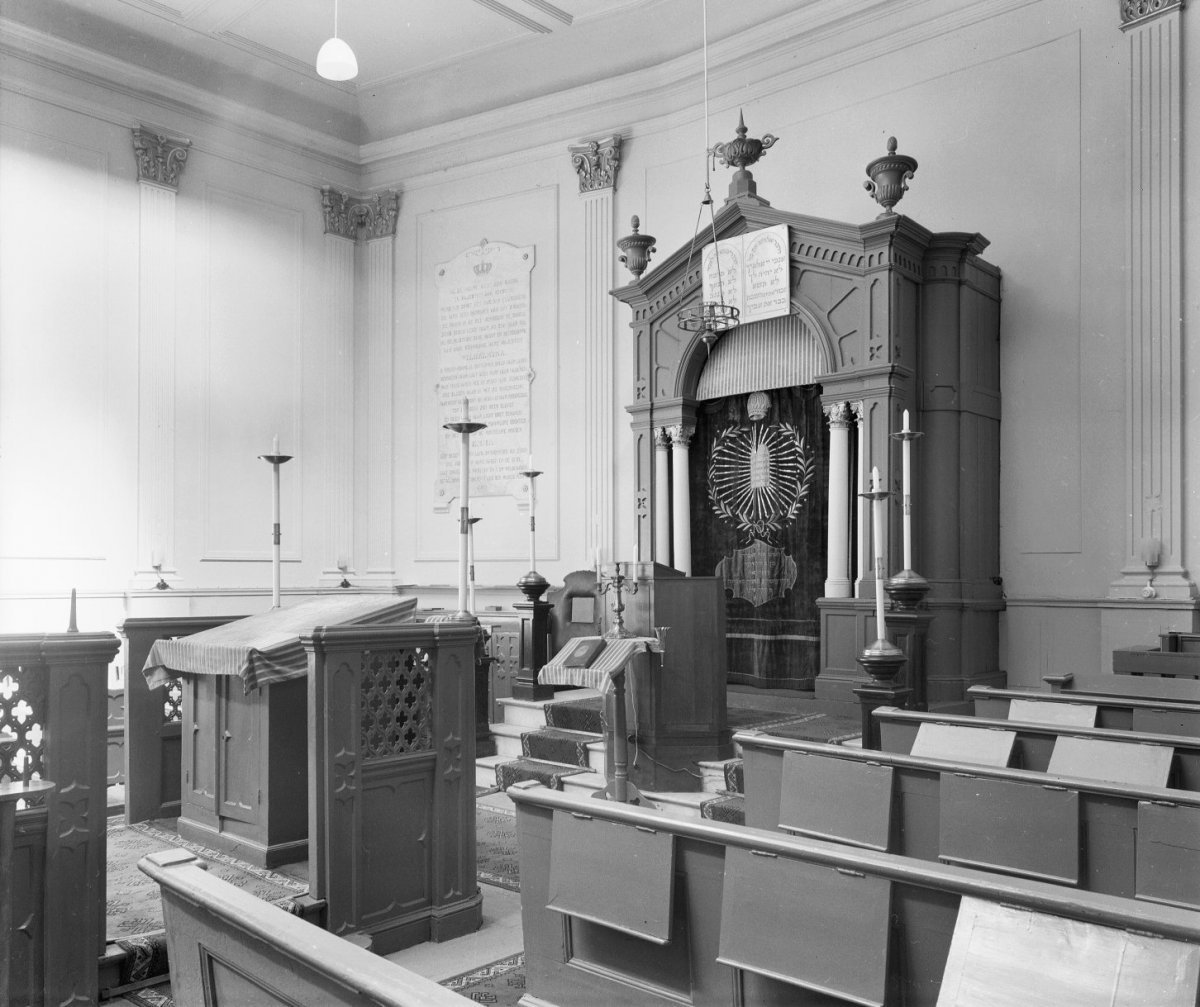
Leiden
Rabbi De Leeuw moved to Leiden after his mother Geertruijd (Gelle) passed away on 25.11.1841 (Source: Picture of gravestone on Akevoth – NIK) as mentioned by him in his book Shoshanas Yaakov In Leiden he moved in with his sister Roosje. Shoshana means Rose in Hebrew, he called the book after the both of them. In 1857 his niece Rebbetzin Fransisca Lewenstein, now a widow, came back to Leiden with her 3 children (one died young see
Rabbi T. Lewenstein Part 1). Besides from learning one-on-one with his students Rabbi Benjamin Cohen-De Lieme and Chief-Rabbi Jacob Heymann Mozes Lewenstein, we know that most of his time in Leiden he’d learn Torah by himself. Other than that he’d work on writing and publishing his Torah novelties, took care of the needs of both his widowed sister and her widowed daughter Rebbetzin Fransisca Lewenstein, besides raising and Torah educating both of her sons, Daniel and Tuvia. Tuvia Lewenstein excelled in his studies and even though he learned by many big Rabbis, he always considered Rabbi De Leeuw his main teacher.
There is a oral tradition that Rabbi De Leeuw had the custom to stay awake and stand in synagogue during Yom Kippur, one night as the Rabbi was standing alone in the synagogue he noticed remnants of a wax candle that had fell over and turned into a fire, he quickly called a local over to extinguish the fire and the synagogue was saved! Even though it’s not mentioned which Synagogue was saved, it’s assumed to have been the Leiden Synagogue which later installed electric lighting, see description of picture below.
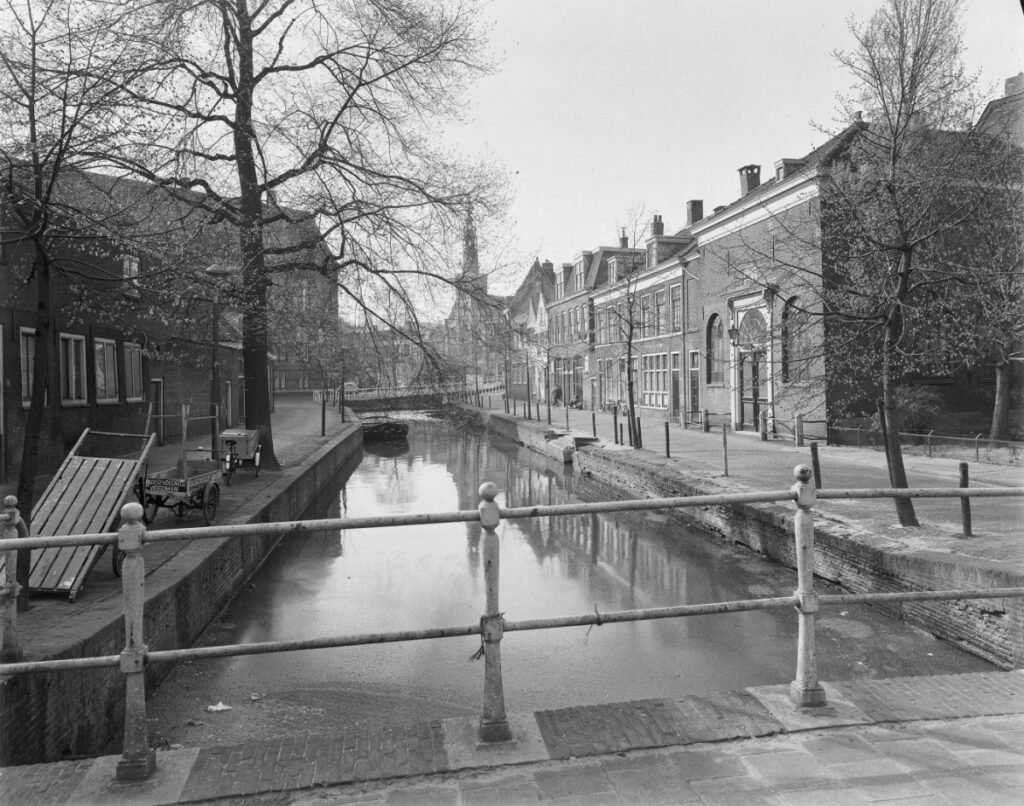
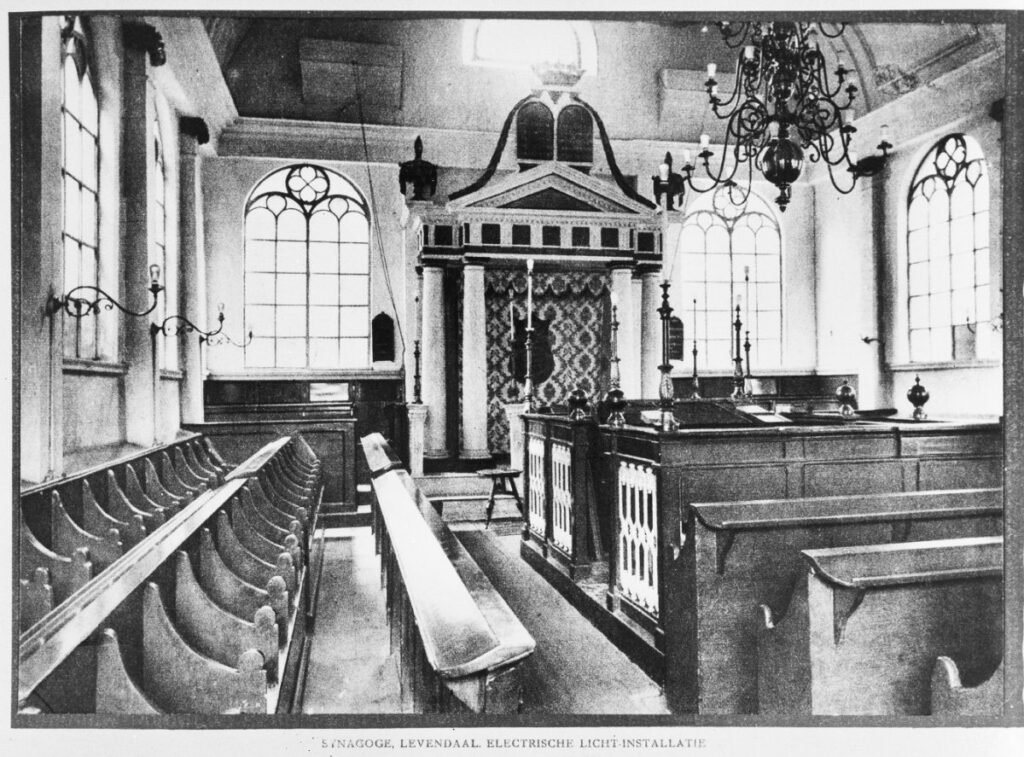
Synagogue, Levendaal.
Electric Lighting Installation (!!)
(Synagogue Leiden before WWII)
Whilst living in Leiden he published the following works:
* Shoshanas Yaakov, on the Sugiya of V’Hatchelet and Shnei Anashim and a sugiya in Mesechet Ketubot Daf 23B, Leyden, 1848 (360 pages).
* Pri Eitz Chaim, Leyden, 1852, on Mesechet Ketuvbt Daf 26 till end of chapter (112 Pages).
* Devarim Achadim, on Mesechet Ketubot on Reish Elu Naarot, Kol HaKeylim Daf 126, Mesechet Ketubot 23B 1st Mishna and Mesechet Peah Chapter 2 Mishnah 1, Leyden, 1853 (48 Pages).
* Mishkenos HaRoim on first two chapter of Mesechet Ketubot and on Mesechet Shabbos, Leyden 1854 (674 Pages).
* Nechlat Yaakov, on Reish Elu Naarot, Rotterdam, 1857 (94 Pages).
* Igrot HaTeshuva, Letter written to Rabbi Moshe Katzennellenbogen
dealing with reasonings of Halacha of shaving during Chol HaMoed,
Hofsteede & Haagens, Rotterdam, 1857 (4 Pages).
* Chelek Yaakov, includes Sugiya in Mesechet Ketubot Daf 35B and Talmuda Ha”Mechucha Achreiya & additions to his previous book Nachlat Yaakov, Leiden – Rotterdam, 1858 (24 Pages).
(Sources: Elu Toldos Avraham by Moreshes Yaakov Institute – Additions to book, Igrot HaTeshuva + Roest, in Isr. Nieuwsbode, 1883, No. 13)
In the year 1857 he wrote in his letter Igrot HaTeshuva to Rabbi Moshe Katzennellenbogen OBM that “he couldn’t look into his wonderful words because he was suffering from a cold. He also says in the introduction to his book Shoshanas Yaakov printed in 1848 that “multiple worries and incidents that withheld me”.
He also wrote there that the Torah had a healing effect on his body and mind and always kept him in good spirit.
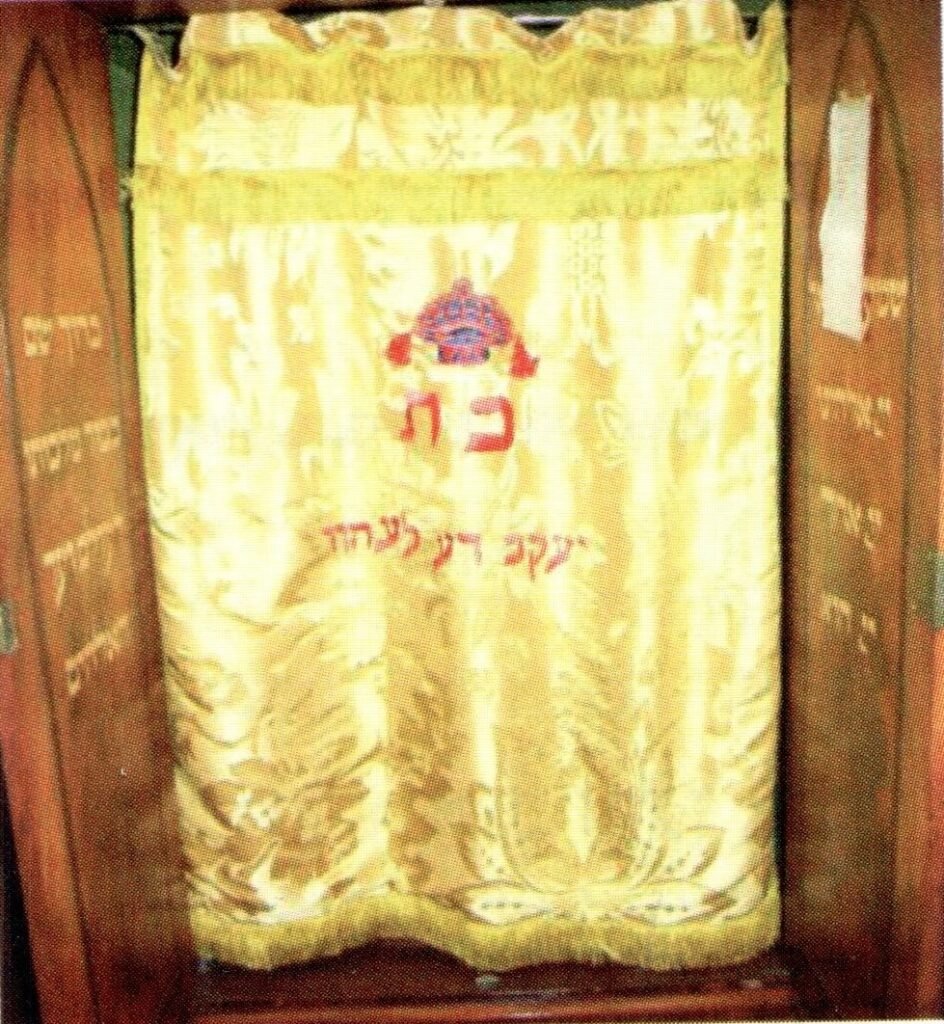
Sefer Torah has Sephardi writing.
Amsterdam
In 1874 Rabbi De Leeuw, his sister Roosje, her daughter Rebbetzin Francisca Lewenstein and two sons Daniel & Tuvia settled at the Raapenburgerstraat in Amsterdam. Rabbi de Leeuw who in Den Bosch had saved up to learn Torah full time in Leiden now needed a job to sustain himself and his sister’s family and became a Maggid Shiur, (Talmudic studies teacher) in the Beis Midrash Eitz Chaim, he was hired by Rabbi Josef Hirsh (Zvi) Dunner, who gave away his own income to hire Rabbi De Leeuw. In Amsterdam he also tought Rabbi Eliezer Lipman Philip Prins (16.03.1835-21.10.1915) and he gets mentioned in two books about Rabbi Prins, Parnes Le’Doro & Parnes L’Dorot.
Book printed whilst living in Amsterdam:
* Achuzat Mer’eyim, on Mesechet Beitza, Amsterdam, 1879 (272 Pages).
* Beit Yaakov, on first 7 chapters of Mesechet Chullin, Amsterdam, 1880 (313 Pages).
The rest of his works on the tractate Ketubot and on the Mishna have never been printed.
His works show up in Talmudical encyclopaedia and catalogs, mostly printed outside of the Netherlands.
(Sources: Elu Toldos Avraham by Moreshes Yaakov Institute – Additions to book, Igrot HaTeshuva + Roest, in Isr. Nieuwsbode, 1883, No. 13)
His sister’s grandson Tuvia joined him in Beit Midrash Eitz Chaim and became a skilled teacher and Rabbi whilst his older brother Daniel, remained a devout religious Jew throughout his life despite the fact that he became a famous painter, this was due to the impact that Rabbi De Leeuw had made on him.
A 2nd article in Israëlietische Nieuwsbode, published in October 1883 describes how Rabbi De Leeuw passed away just 2 days before the inauguration of the new building of Beis Midrash Eitz Chaim.
“Whomever knew the righteous deceased, doesn’t know how to describe this exemplary Jew, from his sincere devotedness, his great level of knowledge, his true religiosity, of all those many who knew of his respectful countenance, who knew him both as a Mensh (person) and as a (true-Torah) Jew! Only 8 to 9 years was he in our midst. How was it that he knew how to make himself, by all those who had contact with, respected and honoured, loved and beloved.”
“Who has not heard R’ Jacob de Leeuw talk! Who shall fill the void, that was cause by the loss of a man so rare in our days? Intense is therefore the mourning in this city, in which he has spent the last years of his life.”
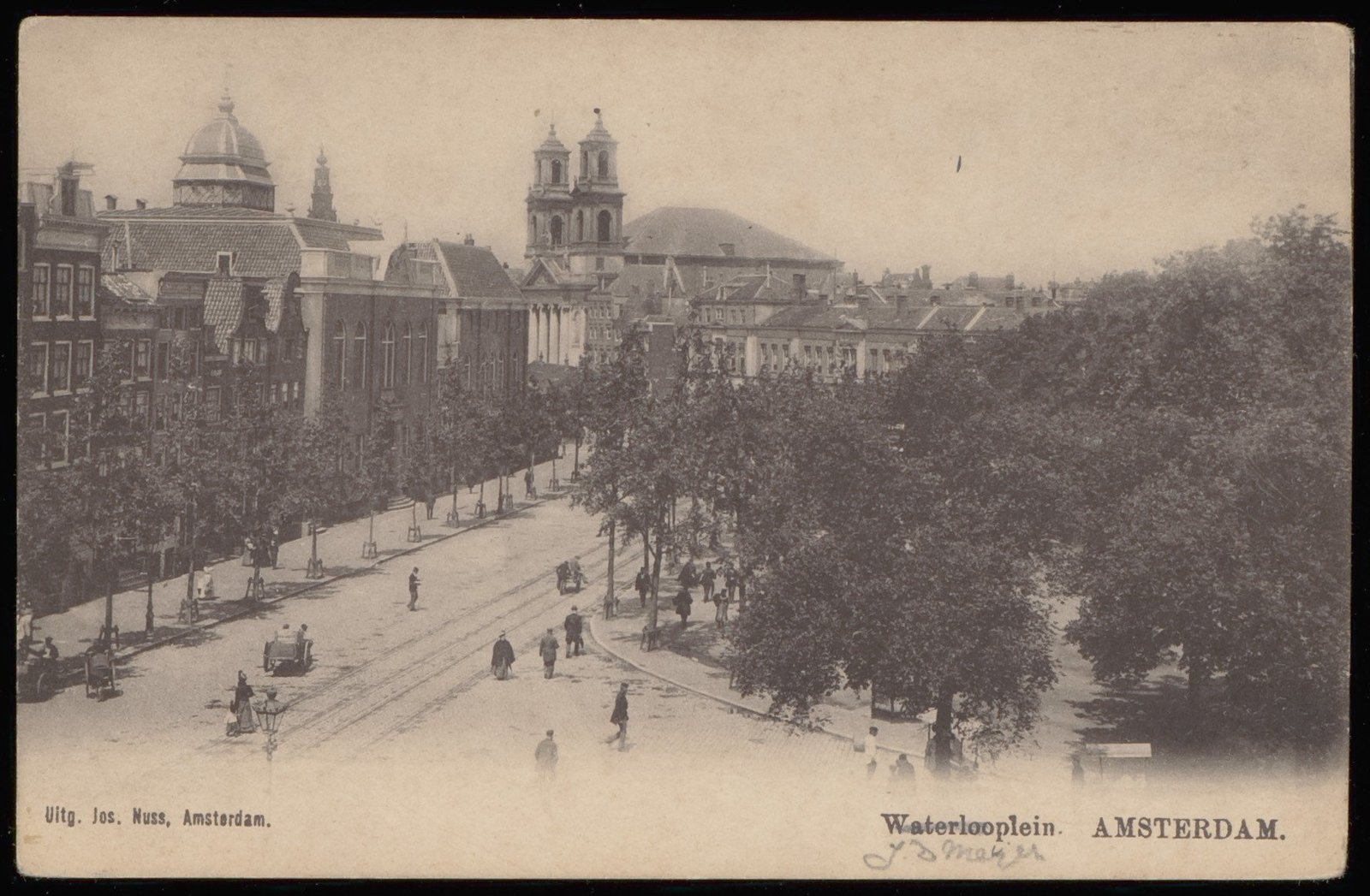
Jonas Daniel Synagogue the location
Rabbi De Leeuw learned
An other eulogy article in a local Jewish weekly Israëlietische Nieuwsbode, Week 38, Sept. 1883 describes how Rabbi De Leeuw passed away just 2 days before the inauguration of the new building of Beis Midrash Eitz Chaim.
“Whomever knew the righteous deceased, doesn’t know how to describe this exemplary Jew, from his sincere devotedness, his great level of knowledge, his true religiosity, of all those many who knew of his respectful countenance, who knew him both as a Mensh (person) and as a (true-Torah) Jew! Only 8 to 9 years was he in our midst. How was it that he knew how to make himself, by all those who had contact with, respected and honoured, loved and beloved.”
“Who has not heard R’ Jacob de Leeuw talk! Who shall fill the void, that was cause by the loss of a man so rare in our days? Intense is therefore the mourning in this city, in which he has spent the last years of his life.”
.ת. נ. צ. ב. ה
Rabbi Jacob De Leeuw was buried at the Jewish Cemetery in Muiderberg.
Dedicated in the loving
memory of Eyve
.ת. נ. צ. ב. ה
Click here to
continue to next article:
Raphael Marcus Beuth, Chazan &
Pillar of the Leiden Jewish
Community
Feel free to E-mail for
any additional information
info@talmudical.nl
© 2024 All right reserved
to R’ Z.
